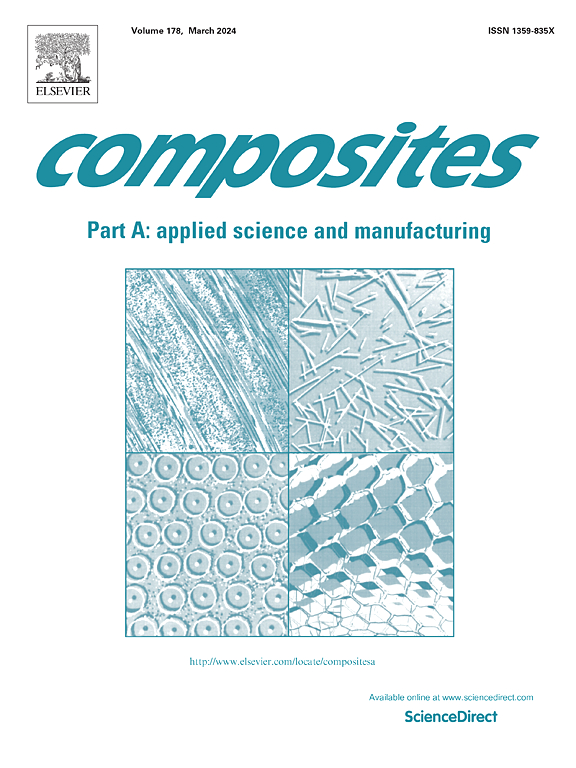A new pattern for conductivity of carbon nanofiber polymer composites with interphase and tunneling parameters
IF 8.1
2区 材料科学
Q1 ENGINEERING, MANUFACTURING
Composites Part A: Applied Science and Manufacturing
Pub Date : 2025-01-11
DOI:10.1016/j.compositesa.2025.108721
引用次数: 0
Abstract
In this study, the Weber-Kamal model is advanced to estimate the electrical conductivity of the samples containing polymer and carbon nanofiber (CNF) by the characteristics of the CNF network, interphase, and tunnels, which were disregarded in the original model. The developed model considers the crucial parameters such as interphase depth, contact number (m), contact diameter, polymer tunneling resistivity (ρ), and tunneling distance (λ), along with network portion and interphase concentration. The developed model’s outputs are validated across various levels of these parameters. Furthermore, the developed model’s calculations are associated to the measured conductivity of various examples. Both parametric evaluations and experimental data corroborate the suggested model. The minimum ranges of λ = 1 nm and ρ = 50 Ω.m maximize the conductivity to 0.23 S/m, while an insulative system is observed at high ranges of λ > 6 nm and ρ > 100 Ω.m. Additionally, an insulative system occurs when m < 30 and the waviness factor (u) > 1.4, whereas the top conductivity of 0.036 S/m is reached with the highest number of contacts (m = 100) among the straight CNFs (u = 1).
求助全文
约1分钟内获得全文
求助全文
来源期刊

Composites Part A: Applied Science and Manufacturing
工程技术-材料科学:复合
CiteScore
15.20
自引率
5.70%
发文量
492
审稿时长
30 days
期刊介绍:
Composites Part A: Applied Science and Manufacturing is a comprehensive journal that publishes original research papers, review articles, case studies, short communications, and letters covering various aspects of composite materials science and technology. This includes fibrous and particulate reinforcements in polymeric, metallic, and ceramic matrices, as well as 'natural' composites like wood and biological materials. The journal addresses topics such as properties, design, and manufacture of reinforcing fibers and particles, novel architectures and concepts, multifunctional composites, advancements in fabrication and processing, manufacturing science, process modeling, experimental mechanics, microstructural characterization, interfaces, prediction and measurement of mechanical, physical, and chemical behavior, and performance in service. Additionally, articles on economic and commercial aspects, design, and case studies are welcomed. All submissions undergo rigorous peer review to ensure they contribute significantly and innovatively, maintaining high standards for content and presentation. The editorial team aims to expedite the review process for prompt publication.
 求助内容:
求助内容: 应助结果提醒方式:
应助结果提醒方式:


